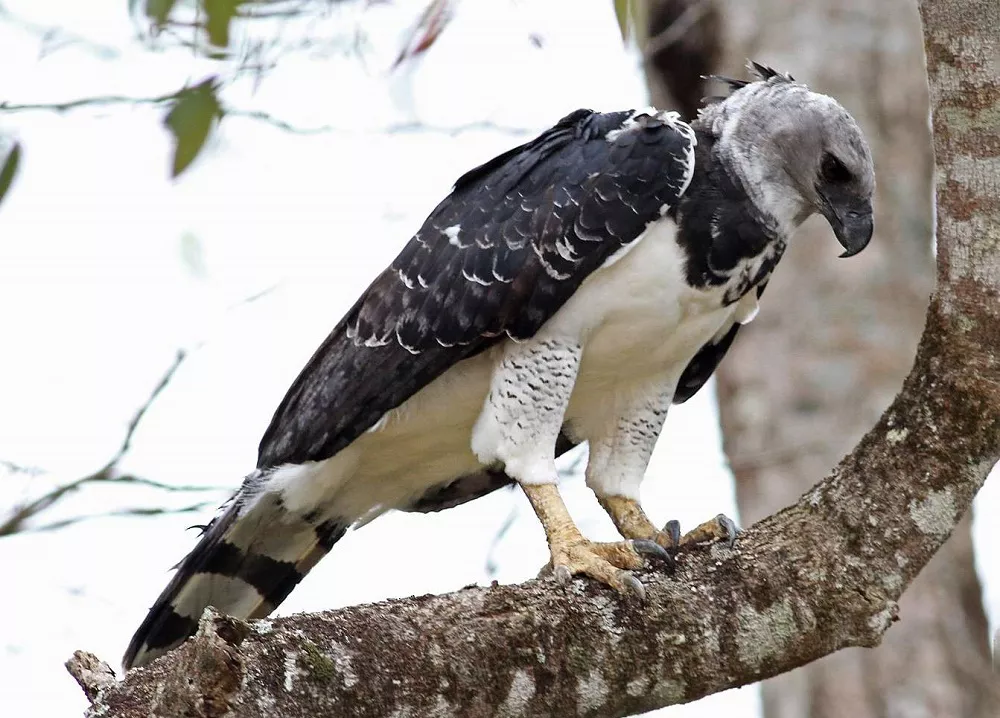The world is home to a diverse range of bird species, each with unique characteristics and traits that make them stand out. Among the most impressive birds of prey are eagles, known for their powerful talons, keen eyesight, and majestic appearance. In this article, we will explore the largest eagle in the world and learn about its fascinating features and habits.
What is the largest eagle in the world?
The Harpy Eagle (Harpia harpyja) is widely considered to be the largest eagle in the world. This magnificent bird can be found in the tropical forests of Central and South America, where it preys on a variety of animals, including monkeys, sloths, and birds.
Physical characteristics of the Harpy Eagle
The Harpy Eagle is an impressive sight, with a wingspan that can reach up to 7 feet (2.1 meters) and a weight of up to 20 pounds (9 kg). Its body is covered in dark feathers, and its head is adorned with a distinctive crest of feathers that resembles a crown.
One of the most striking features of the Harpy Eagle is its powerful talons, which can be up to 5 inches (13 cm) long and are capable of exerting a pressure of up to 700 pounds per square inch (psi). These talons are used to capture and kill prey, and are so strong that they can even break bones.
Habitat and behavior of the Harpy Eagle
The Harpy Eagle is found primarily in the rainforests of Central and South America, where it spends most of its time perching high in the trees. It is a solitary bird, but may form pairs during the breeding season. The female Harpy Eagle is larger than the male, and both parents are involved in caring for their young.
The Harpy Eagle is an apex predator in its habitat, meaning that it is at the top of the food chain and has few natural predators. Its diet consists mainly of mammals, such as monkeys, sloths, and opossums, but it will also eat birds and reptiles.
Predatory Abilities of the Harpy Eagle
The Harpy Eagle’s predatory abilities match its size and strength. As an apex predator, it possesses exceptional hunting skills and adaptations to capture a variety of prey. Sloths, monkeys, tree-dwelling mammals, and large birds constitute the primary diet of the Harpy Eagle. Its powerful talons and sharp beak enable it to capture and carry off prey weighing up to seven kilograms (15 pounds). With its keen eyesight and sharp reflexes, the Harpy Eagle executes precise attacks, often targeting animals within the dense rainforest canopy.
Conservation status of the Harpy Eagle
The Harpy Eagle is classified as Near Threatened on the IUCN Red List of Threatened Species, which means that it is at risk of becoming endangered if conservation measures are not taken. Habitat loss due to deforestation is the biggest threat facing the Harpy Eagle, but it is also hunted by humans for its feathers and other body parts.
Conservation efforts are underway to protect the Harpy Eagle and its habitat, including the creation of national parks and protected areas. Education and awareness programs are also being implemented to promote the importance of conserving this magnificent bird and its ecosystem.
Conclusion: Appreciating the world’s largest eagle
The Harpy Eagle is a truly remarkable bird, with its impressive size, strength, and beauty. As one of the largest eagles in the world, it serves as a reminder of the incredible diversity of life on our planet. By appreciating and protecting species like the Harpy Eagle, we can help preserve the natural wonders that make our world so unique and beautiful.


 Facebook
Facebook  Instagram
Instagram  Youtube
Youtube 